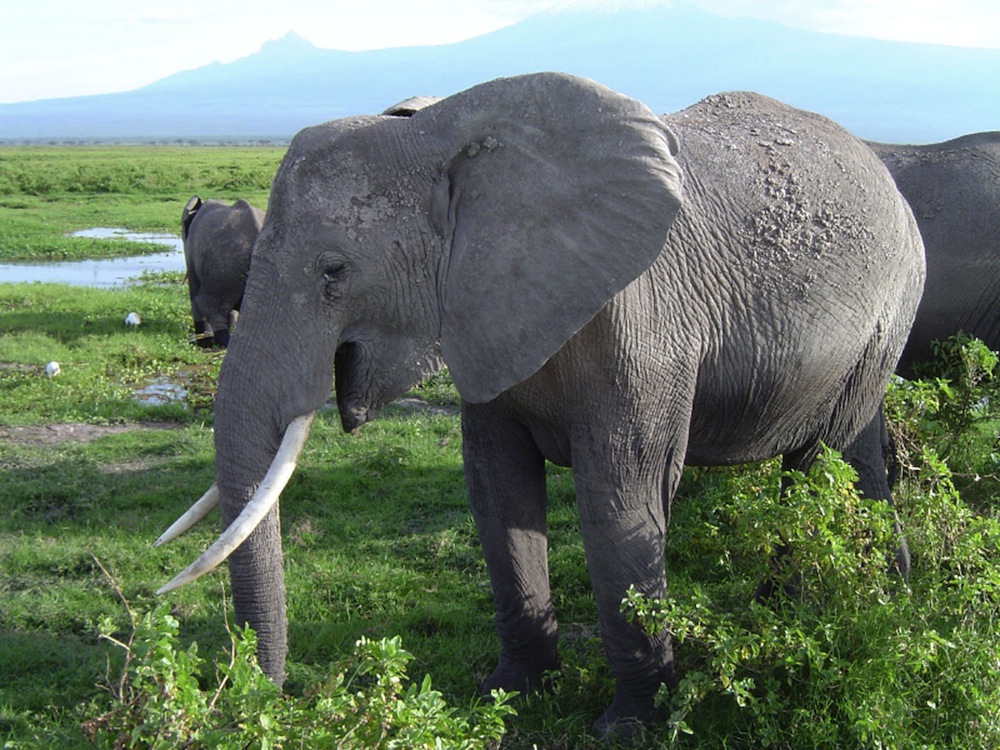Secret to Elephants' Thundering Calls Discovered

Elephants' deepest calls can thunder up to 6 miles (10 kilometers) away. Now, researchers have learned for the first time how the massive animals produce these sounds.
It turns out that they do it in the same way that humans talk, pushing air through their vocal cords to make them vibrate. Elephants can go much lower than humans, however, because their vocal cords are eight times longer.
"The sounds the elephants make are off the piano keyboard," said study researcher Christian Herbst, a voice scientist at the University of Vienna, Austria. In fact, at less than 20 hertz in frequency, the main components of these ultra-deep calls aren't detectable to the human ear.
Until now, researchers weren't sure how elephants produced such low sounds. In fact, it's difficult to study voice production in animals in general, Herbst told LiveScience. In humans, researchers can insert cameras through the throat into the larynx, or voicebox, while people make different sounds. Animals tend to be less cooperative on that front, Herbst said. [Elephants: Photos of Largest Land Animals]
There are two ways to produce sound by vibrating the vocal cords (or vocal folds, as scientists call them). The first is called active muscular contraction, or AMC. With this method, the throat muscles actively contract to vibrate the vocal folds. AMC is how cats purr.
The other method of sound production is called the myoelastic-aerodynamic (MEAD) mode. The MEAD mode uses air from the lungs to vibrate the vocal folds. MEAD is how humans talk and sing.
Herbst and his colleagues were able to investigate which method elephants use when they had the opportunity to investigate the larynx of an elephant that died a natural death at the Berlin Zoo. The researchers mounted the larynx on a tube and blew humidified warm air through it to mimic breath. If this method produced vibrations that matched the low-frequency calls of living elephants, the findings would bolster the argument for MEAD-produced sounds. If the vibrations didn't match up, the sounds would have to be produced by the AMC "purring" method.
Sign up for the Live Science daily newsletter now
Get the world’s most fascinating discoveries delivered straight to your inbox.
The vibrations matched. That doesn't entirely rule out AMC in elephants, the researchers report in the Aug. 3 issue of the journal Science, but it suggests that MEAD is the more likely culprit for low-frequency cries. [Video: See Elephant Vocal Vibrations]
"What is cool to me is that nature came up with a system that you can find in mammals from the very, very large — so basically we now have evidence for the largest land-based mammal — to very, very small like very tiny bats," Herbst said.
That size range brings with it an impressive range in frequency, from elephants at less than 20 hertz to bats that can squeak at more than 110,000 hertz. The human vocal cords can produce sounds ranging from about 50 hertz to 7000 hertz, with most voice sounds falling between 300 hertz and 3,400 hertz.
"It still strikes me as fantastic what we humans, particularly, can do with this system," Herbst said. Comparative anatomy of the same system in different animals can help researchers understand how voice evolved in the first place, he said.
"We see variations in the laryngeal anatomy," he said, "and usually, nature has a good reason to come up with slight variations."
Follow Stephanie Pappas on Twitter @sipappas or LiveScience @livescience. We're also on Facebook & Google+.

Stephanie Pappas is a contributing writer for Live Science, covering topics ranging from geoscience to archaeology to the human brain and behavior. She was previously a senior writer for Live Science but is now a freelancer based in Denver, Colorado, and regularly contributes to Scientific American and The Monitor, the monthly magazine of the American Psychological Association. Stephanie received a bachelor's degree in psychology from the University of South Carolina and a graduate certificate in science communication from the University of California, Santa Cruz.










